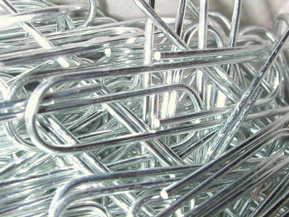"One paper clip at a time."
As part of their study of the Holocaust, children at a middle school in Whitwell, Tennessee tried to collect six million paper clips - each one to represent one of the Jews killed by the Nazis. By doing so, these students spread a lesson of compassion and empathy around the entire world.
The idea came around when David Smith, the assistant principal, history teacher and football coach at the school, suggested in 1998 to principal Linda Hooper that they should use the Holocaust as their center for a lesson on tolerance and acceptance. In their school of 425 students, there was not one Jew, not one Catholic, and not one Asian. There was a single Hispanic student and a mere six black students. Their rural community is located in close proximity to Pulaski, Tennessee, organizing home of the Ku Klux Klan.
Even though the odds seemed stacked against any potential interest in the subject matter, the school went ahead and offered a voluntary course on tolerance after school. On the first day, 25 students showed up. They were captivated by the stories of the things that happened during the holocaust, but found it difficult to visualize the number six million, which represented the number of people killed by the Nazis. When the students were researching, they discovered that Norwegian citizens wore paper clips on their lapels as a protest against Nazi occupation during World War II. The kids thought paper clips were the perfect representation, and became determined to collect six million of them. After the first year, though, only 100,000 had been collected despite the fact that the children asked everyone with whom they came in contact for a paper clip.
The kids tried to find ways to increase their paper clip intake, and the breakthrough came in the form of a 95-year-old Holocaust survivor named Lena Gitter. She brought the project to the attention of two German journalists named Peter Schroeder and Dagmar Schroeder-Hildebrand. They eventually wrote a book about the children's project in addition to several newspaper stories. As a result, the children received an influx of paper clips. As the clips continued to arrive, the fame surrounding the story spread. Some of the effects on the town were negative and some were quite positive, and the documentary Paper Clips tells their story. (Kim Hollis/BOP)

![]() Tweet
Tweet



